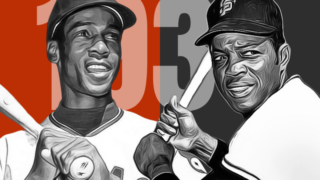The term “base-ball” originally appeared in John Newbery’s 1744 children’s novel A Little Pretty Pocket-novel. English cricket and rounders are the most likely stick-and-ball activities that inspired baseball. Milestones and pivotal moments have marked the sport’s evolution. Jackie Robinson helped integrate baseball, which helped advance equality in the U.S. Legendary players like Babe Ruth and Hank Aaron have set records and helped change baseball.
The game’s rules, strategy, and equipment have changed as it has gained popularity. Fans and historians have tracked baseball’s intricate history. Baseball evolution has shaped American culture and history, from humble beginnings to Major League Baseball. Read to the end to learn more about the history of baseball and how it has changed over the decades.
Just as baseball has evolved over time, so too have modern games. Today, the excitement of gaming extends beyond traditional sports to include online opportunities such as no deposit free spins in New Zealand. For those interested in exploring these modern gaming experiences, here you can find more useful information.
The Origins of Baseball: Predecessors
The game of baseball is believed to have evolved from a number of older stick-and-ball variations that originated in the early 1800s. English games like cricket and rounders had their origins in ancient Egyptian games, games played by Mayan tribespeople or in France, and so on. Nonetheless, the most convincing theory suggests that it originated from games performed in England.
In his 1744 children’s book A Little Pretty Pocket-Book (Britannica), John Newbery makes reference to a game known as “base-ball.” The bases are designated by posts in the book image instead of the bags and flat home plate that are common in current baseball.
History of Baseball
Based on earlier bat-and-ball games, pinpointing exactly where baseball came from is challenging. A depiction of clergymen engaging in a baseball-like game, presumably referred to as la soule, can be seen in a 1344 French manuscript. The ball was standardized to weigh 5.5-6 ounces and have a diameter of 8–11 inches in the mid–1850s by ball clubs in the New York region. John Newbery’s A Little Pretty Pocket-Book, a children’s book published in 1744, featured a short poem and an image of a game called base-ball. This is where the name “base-ball” first appeared.
Modified Baseball Rules
The ball was standardized to weigh between 5.5 and 6 ounces and have a circumference of 8 to 11 inches in the mid-1800s by ball clubs in the New York area. The choice led to a playing ball that was both larger and more uniform in size. Despite widespread belief to the contrary, the widespread belief that Abner Doubleday was the one who invented baseball in 1839 is substantially disproven.
It is more commonly thought that Alexander Cartwright, a bank clerk and volunteer firefighter, laid the groundwork for contemporary baseball by codifying a set of rules. Cartwright had a huge impact by switching from square to diamond-shaped playing fields, which were previously employed in previous games.
The invention of the throwing slab and mound in 1893 was one of many landmarks reached during the years. The goal was to level the playing field for batters and pitchers, although the height of the mound has changed over the years.
The Rise of Professional Leagues
In the 19th century, professional baseball first began to take shape. An important turning point occurred in 1871 with the formation of the first professional baseball league, the National Association of Professional Baseball Players. The National League, which has been in operation constantly since its formation in 1876, came later.
The World Series, a yearly championship match between the National and American League champions, was created in the early 20th century, which coincided with the establishment of the American League. The integration of African-American players into the MLB was a watershed moment in baseball’s history, and Jackie Robinson rose to prominence as a symbol of equality amid the Civil Rights Movement of the 1960s.
Advancing Technology
Technological and equipment developments were essential in shaping the game as it progressed. Baseball gloves used to be considerably less complicated and had far less cushioning and design than the modern versions. The game was already risky because players had to play with their bare hands to grab the ball. Modern baseball gloves are more effective and protective than ever before because of advancements in material science and production methods.
Bats, too, have changed over the years, progressing from crude wooden clubs to complex tools crafted from a range of materials like composites. The development of better protective gear for baseball players has progressed steadily throughout the years. This includes catcher’s gear and helmets.
Record Breakers
Players have persistently challenged conventional wisdom throughout baseball’s history. Generations of players and fans have been inspired by these record-breaking achievements, which have rewritten the record books.
There have been some notable record breakers: The 34-year record held by Babe Ruth for most home runs in a season (60) in 1927. In 1961, Roger Maris hit 61 home runs, surpassing Babe Ruth’s record. In 1974, Hank Aaron hit 715 home runs, surpassing Babe Ruth’s career record.
Hall of Fame
In Cooperstown, New York, you may find the Baseball Hall of Fame, a monument to baseball’s greats. With its inaugural class of inductees in 1936, the Hall of Fame has honored the game’s most outstanding managers, players, and contributors. Some notable members of the Hall of Famers are
- Members of the inaugural class in 1936: Walter Johnson, Christy Mathewson, Honus Wagner, Ty Cobb, Babe Ruth.
- The 1962 induction of Jackie Robinson, the first African-American athlete
- The 1999 inductee Nolan Ryan set a record with 5,714 strikeouts in his career.
Baseball has an intriguing history that began in England in the 18th century. The sport has now become popular worldwide. The history of baseball includes many milestones, rule changes, and memorable incidents. These alterations were organic and deliberate, such as requiring outs to be made by catching or tagging a player rather than throwing it.
Baseball has evolved in equipment, player positions, stadium architecture, and fan interaction. Technology has also altered the sport by enabling performance tracking, immediate replay, and better broadcasting. Baseball has had many milestones that have made it a cultural icon. Baseball continues to attract spectators and inspire future athletes with its professional leagues, record-breaking exploits, and classic plays.




